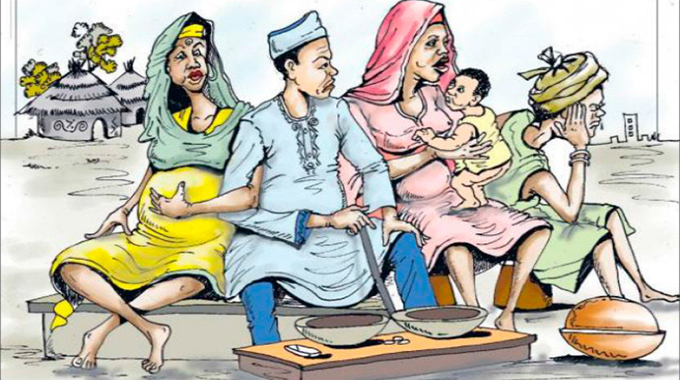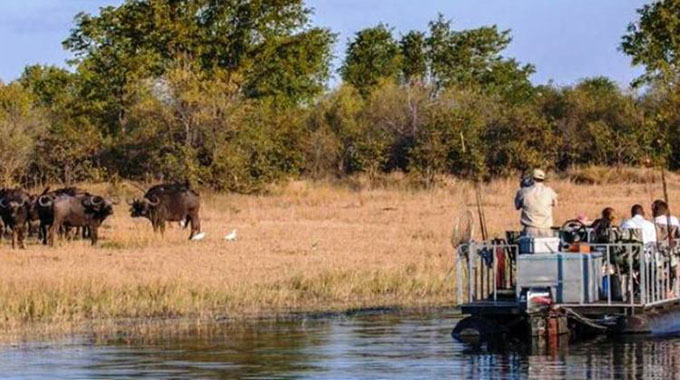The ‘kaffirs’ and of Rhodesia
for almost two decades.
The man was a great teacher, having graduated from Kutama Mission Teachers’ College in 1959, a resounding feat for a black Rhodesian.
He had taught at Mamini, Chimufombo, Chipangura, Mushongahande, Chemachinda and Muzika schools in the famous land.
His Pan African stance and protestant attitude often landed him in trouble with colonial Rhodesia.
In one such incident in 1977, he was carrying this villager on the back of his iron horse, cycling to Sipolilo Centre (now Guruve Centre).
A kilometre before the centre, just opposite what is today the main gate to St Francis and St Clare Secondary School, was a concrete road grid, with a long stretching fence on either side to make it the only southern entrance into the administrative centre.
There were two other grids, one just after Shinje River near what is today Guruve Primary School. That one was used by people coming from the western direction, generally referred to as Kachuta Road. The third was by Dande River Bridge to the north.
The grid’s first purpose was to bar livestock, especially cattle and donkeys, from roaming around the district commissioner’s office area.
The second was to control the behaviour of “kaffirs”, as black people were derogatorily called by the colonial settlers.
There, the kaffirs were forced to alight from their bicycles and either push them through or leave them behind, hidden in the bush.
It was mandatory for kaffirs to remove their sun hats and place the hats under their armpits before proceeding to do their business, including going to hospital and shopping.
Blacks were not allowed to enter offices of the DC and his support staff with their shoes on. Worse still, most of the blacks wore home-made shoes from discarded vehicle tyres.
On their way out of the DC’s area, they would cross the grid, put on their hats and ride on their iron horses back to the Chipuriro Tribal Trust Lands or reserves. Kuruzevha!
It was taboo to wear a hat in the DC’s area, let alone enter his office with your shoes on.
Insignia “Silence and No Stopping” were plenty.
The blacks would push their bicycles around until they were done with their chores because a ride would annoy the DC.
Only him and his white staffers were allowed to beat the scorching heat with sun hats.
For the blacks, removing the hat was a sign of the ultimate respect for the DC.
The DC was semi-deity.
On arriving at the grid this villager’s father noticed that the black police auxiliary policemen, who usually guarded the grid entrance, were not there and decided to ride on for at least a few more metres but before he could beat his estimated distance, he was flagged down by a white boy who looked hardly 15.
He never looked like he had gone past his puberty, given his childish and pimply face.
This villager’s father brought the bicycle to a rattling halt, rubbing his shoes against the wheel, as braking mechanism.
Quite an experienced rider!
The rickety white boy, with eyes that looked like they were about to jump out of their sockets, frothed from the mouth in utter disgust.
Before this villager’s father could explain why he had proceeded on the saddle, he was slapped at least twice on the face and it annoyed me.
It was akin to a thunder-clap that must have send him seeing stars.
This villager’s heart pounded.
Adrenalin rose.
How could his father, his own father, a respected teacher, be beaten by a boy this villager could take on for a fist fight?
Do village elders not say no child sees the ugliness of his parent? This villager’s father shook his head in pain.
He twisted his face in agony. His right ear must have been deafened by the clap.
He said no word.
There was a second clap.
He ducked the third one but was ordered to drive his bicycle to the police station.
This villager questioned his father why he could easily be beaten by a small boy, yet he always beat the hell out of this villager all the time?
“No. . , no . . ,no my son! You don’t retaliate against a white man. It is taboo. They are a superior race. They run this country and we will be in a bigger trouble if I attempt to retaliate. We will be lucky he does not confiscate our bicycle,’’ this villager’s father explained rather uncomfortably.
At the police camp, the white boy murmured something to a black policeman, who combined his answers with salutes.
He took us to the DC’s office.
Behind the complex was a building painted in whitewash.
Currently the building is being used by veterinary services, and the Ministries of Lands, and Youths etc.
The black policeman who happened to have been taught by this villager’s father, decided not to confiscate the bicycle as ordered telling my father to leave in haste and never to do it again.
But that was not before we learnt that there was a room full of confiscated bicycles and hats.
Their black owners were punished by being whipped in the nude or sent to jail.
The hats and bicycles would be donated at some stage to “good” blacks who included auxiliary forces, garden boys, cooks and other good Africans.
At independence in 1980, when President Mugabe announced his famous reconciliation, reconstruction and rehabilitation programme, this villager’s father was hurt.
He immediately reminded this villager of the story and said we were hugging a hyena.
“Do we have to hug a hyena to make peace? The hyena is filthy and it will devour us!” It took this villager’s father a long period – years and years – to accept reconciliation.
Years into Zimbabwe this villager’s father came accross Ian Smith walking in First Street and he immediately exclaimed.
“President Mugabe is a good man. Smith is walking on a borrowed head. Smith should have been hanged at independence. Today he still walks free and so are many of his colleagues who commited crimes against humanity.”
Of course Smith was to die of natural causes later.








Comments